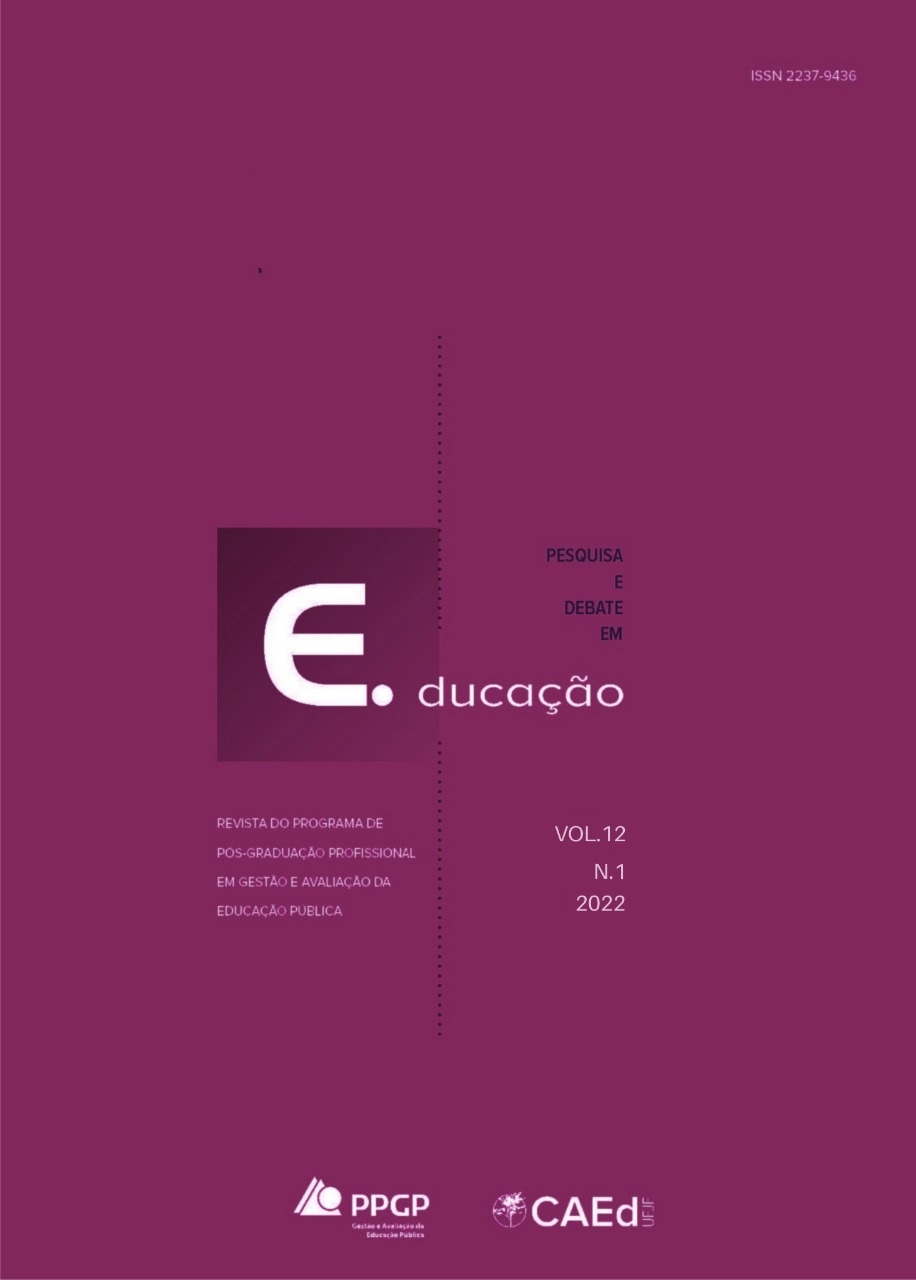e-Val
a prototype for analyzing and evaluating levels of interactivity in technology-enhanced items
DOI:
https://doi.org/10.34019/2237-9444.2022.v12.36983Keywords:
Technology-enhanced items, Interactive technology-enhanced items, Interactivity assessment instrument, e-ValAbstract
The work aims to present the instrument “e-Val: Evaluation of Interactivity in technology-enhanced items”, a prototype that diagnoses the levels of interactivity of technology-enhanced items. e-Val is the result of research carried out by the authors from February 2020 to January 2021 and included, in the theoretical-bibliographic review, the definition of the technological and pedagogical elements responsible for the interaction, as well as indicators with relevance indices and criteria with levels of interactivity. Then, the development and prototyping of the instrument and validation through the analysis of digital items available on MathemaTIC and TAO platforms took place. The results obtained showed that the instrument is effective not only to help developers of technology-enhanced items in the planning and design of interactivity, but also to analyze the level of interactivity in items that have already been developed. As for the analysis of the technology-enhanced items available on the platforms, they present varying levels of interactivity. The MathemaTIC platform, aimed at learning activities in everyday school life, features more attractive design, gamification elements, and the use of e-Val pointed to medium and high levels of interactivity. The technology-enhanced items produced by the CAEd/UFJF teams with the TAO platform, on the other hand, have low interactivity. The analyzes showed that there is still a prevalence of the transposition of items developed in print to the digital medium, with a focus on specific content and/or actions in which interactivity is trivialized by objects or clickable response options and linear navigation sequences, as well as rare associations between knowledge, peers or didactic-pedagogical strategies to arrive at possible answers.
Downloads
References
BELLONI, Maria. Luiza. Educação a Distância. 2. ed. Campinas/SP: Ed. Autores e Associados, 2001.
BRUNO, Adriana Rocha. A aprendizagem do educador: estratégias para a construção de uma didática on-line. Tese (Doutorado em Educação) – Programa de Pós-Graduação em Educação: Currículo, Pontifícia Universidade Católica de São Paulo, São Paulo. 2007. Disponível em: https://tede2.pucsp.br/bitstream/handle/9974/1/Adriana%20Rocha%.pdf. Acesso em: 15 jan. 2021.
BRUNO, Adriana Rocha. Relatório de atividades de pesquisa em avaliação 2016-2019/Outubro. CAEd, 2019a.
BRUNO, Adriana Rocha. Relatório de atividades de pesquisa em avaliação 2018-2019/Outubro. CAEd, 2019b.
BRUNO, Adriana Rocha. Travessias invisíveis: plasticidade, diferença e aprendizagem em redes rizomáticas de formação de adultos educadores nos ambientes online. In: XV ENCONTRO NACIONAL DE DIDÁTICA E PRÁTICA DO ENSINO: convergências e tensões no campo da formação e do trabalho docente, 15, 2010. Anais eletrônicos ... Belo Horizonte: Autêntica, 2010. Disponível em: http://endipe.fae.ufmg.br/livros/Livro_3. Acesso em: 15 jan. 2021.
FILATRO, Andrea. Design instrucional contextualizado: educação e tecnologia. São Paulo: Editora Senac São Paulo, 2004.
MORAES, Maria Cândida. O paradigma educacional emergente. Campinas-SP: Papirus, 1997.
PALLOFF, Rena M., PRATT, Keith. Construindo comunidades de aprendizagem no ciberespaço: estratégias eficientes para sala de aula online. Trad. V. Figueira. Porto Alegre: Artmed, 2002.
PASSOS, Paula Caroline Schifino Jardim; BEHAR, Patricia Alejandra. Interação e Interatividade através das interfaces de materiais educacionais digitais. Novas Tecnologias na Educação - CINTED-UFRGS, v.9, n.1, jul. 2011.
PETERS, Otto. Didática do Ensino a Distância: experiências e estágio da discussão numa visão internacional. Trad. I. Kayser. S. Leopoldo/RS: Editora Unisinos, 2003.
PRIMO, Alex Fernando Teixeira. Interação mútua e reativa: uma proposta de estudo. Revista Farmecos, n.12, jan. 2000. p. 81-92.
SCORTEGAGNA, Liamara. Relatório de atividades de pesquisa em avaliação 2020-2021/Março. CAEd, 2020.
SILVA, Marco. Que é interatividade. Boletim técnico do Senac, Rio de Janeiro, v. 24, n. 2, mai/ago. 1998. p. 27-35.
SILVA, Marco. Sala de aula Interativa: educação, comunicação etc. 7. ed. São Paulo: Ed. Loyola, 2014.
SILVA, Marco. (org). Educação online: teorias, práticas, legislação, formação corporativa. São Paulo, Edições Loyola, 2003.
SILVA, Marco; SANTOS, Edméa. Avaliação da aprendizagem em educação online. São Paulo: Edições Loyola, 2006.
SILVER, Kevin. What Puts the Design in Interaction Design. 2007. Disponível em: https://www.uxmatters.com/mt/archives/2007/07/what-puts-the-design-in-interaction-design.php. Acesso em: 16 jul. 2020.
SMITH, Gillian Crampton. Foreword: What is interaction design. In Designing interactions. Cambridge, MA: MIT Press, 2007. Disponível em: http://www.designinginteractions.com/downloads/DesigningInteractions_foreword.pdf. Acesso em: 17 jul. 2020.
SIMS, Rod. Interactivity: a Forgotten Art? Computer in Human Behavior, v. 13, n. 2, may. 1997. p. 157- 180.
Downloads
Published
How to Cite
Issue
Section
License
Copyright (c) 2022 Liamara Scortegagna; Adriana Rocha Bruno

This work is licensed under a Creative Commons Attribution 4.0 International License.




















